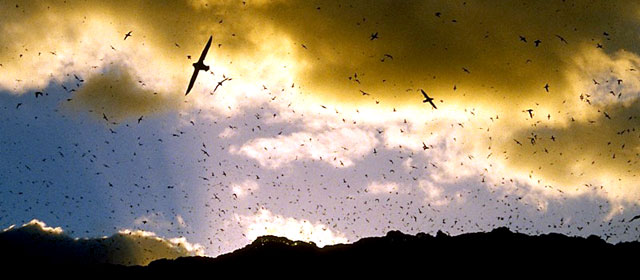Story summary
What are muttonbirds?
Muttonbirds, or sooty shearwaters, are known to Māori as tītī. Millions of these seabirds live on the islands scattered around Rakiura (Stewart Island), at the southern tip of New Zealand. The birds are dark brown, and about the size of a duck. They nest in burrows. Valued by Māori as food, the birds are said to taste like mutton (sheep meat).
Who can catch muttonbirds?
Rakiura (Stewart Island) Māori have rights to collect muttonbird chicks for a season every year. The muttonbirding season lasts from 1 April to 31 May. During this time, whole families come together, travelling by boat and helicopter to the islands. There, they work day and night to catch and process as many chicks as possible.
Catching the birds
There are two main ways of catching muttonbird chicks:
- Nanao: at the beginning of the season and during daylight, muttonbirders reach into the burrow and extract a chick. They may also dig into the burrow from above and pull the chick out.
- Rama: at the end of the season the birds are caught when they come out of their burrows at night to stretch their developing wings.
How they are processed
Once caught and killed, the chicks are plucked. The wings and feet are cut off. Muttonbirders then dip the bodies in molten wax to remove the layer of downy feathers. When the wax hardens and is peeled away, the down comes off with it. The birds are then covered in salt to preserve them, and stored in plastic buckets. Traditionally, they were kept in bags made of large kelp (seaweed).





